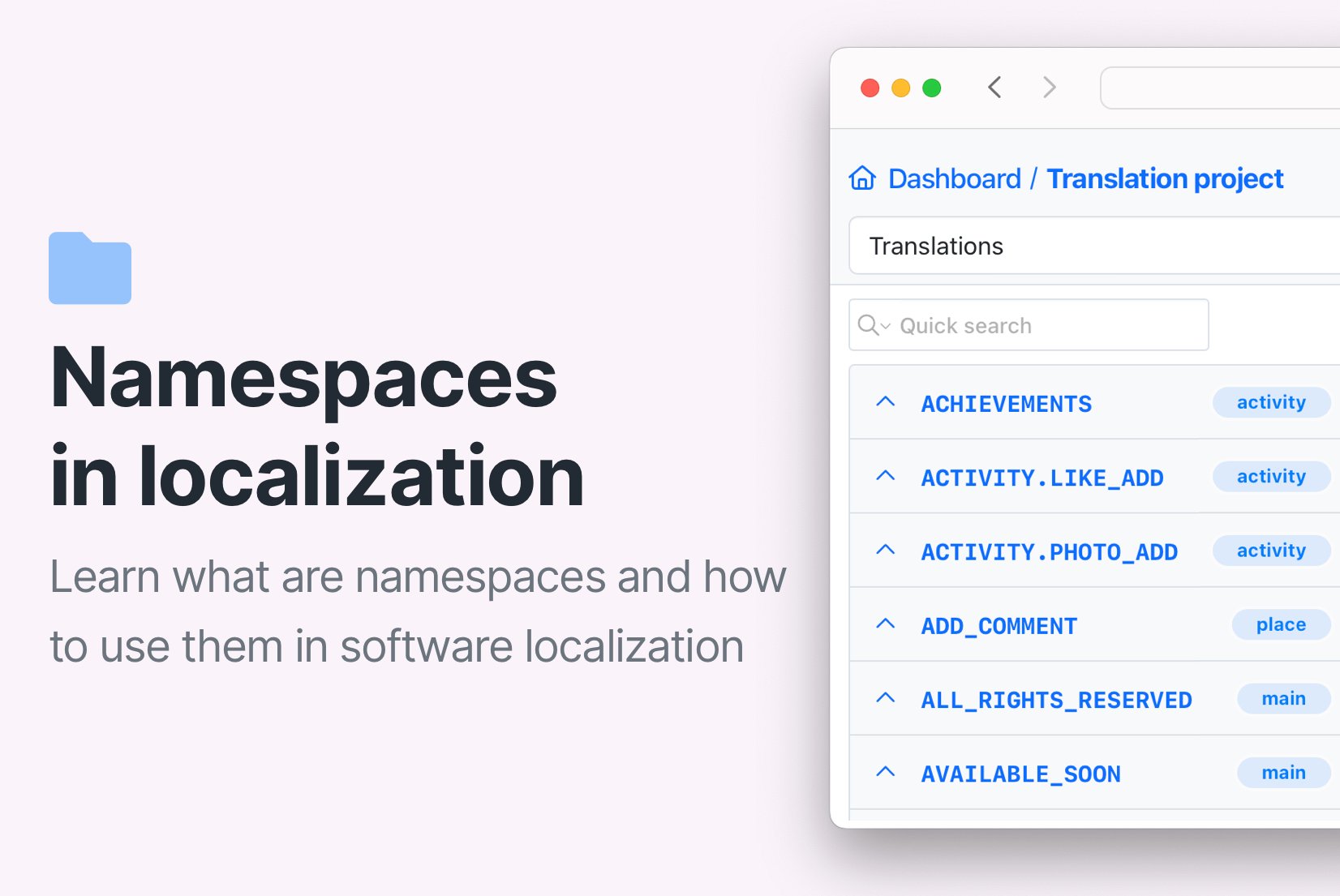Management platform
for customer translations
Manage alternative translations for your app users. Create customer context to override default translations and improve user experience.
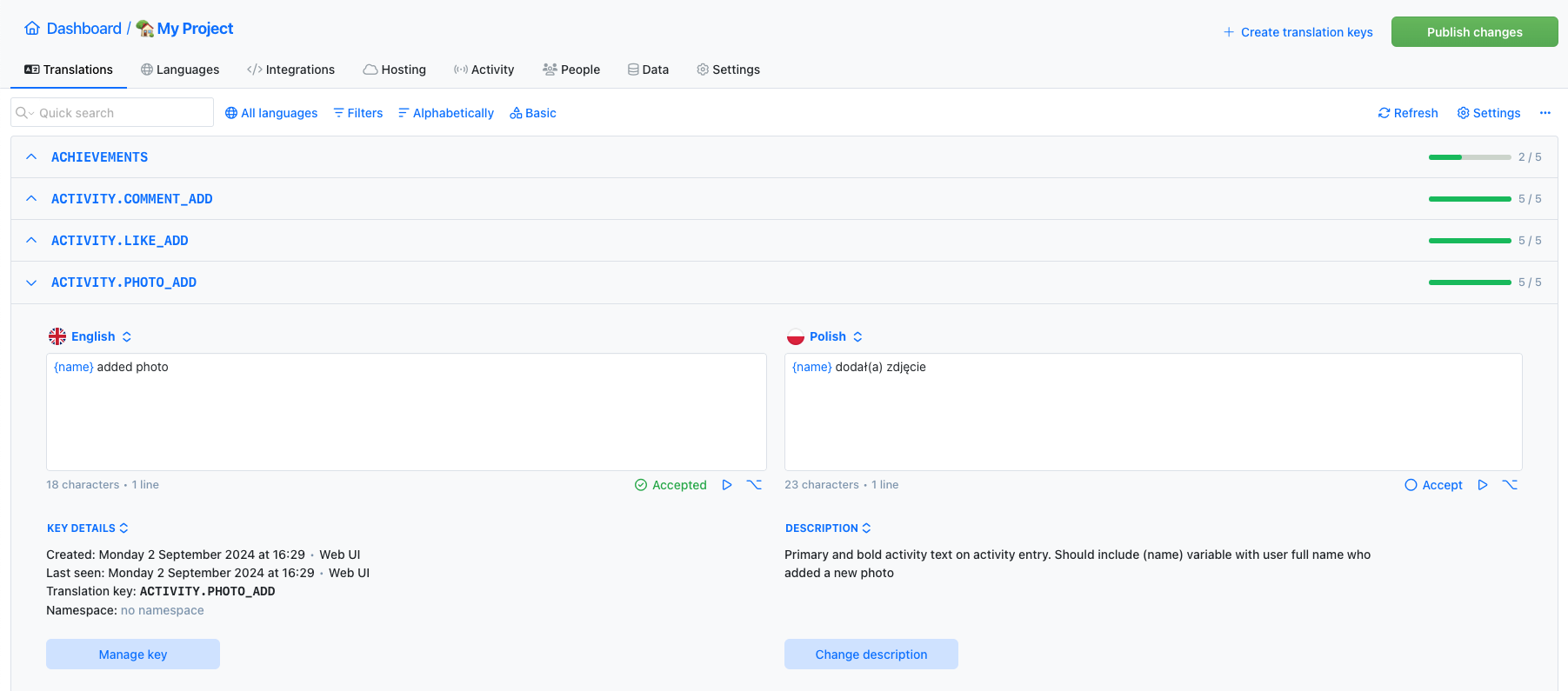
- Auto-translation
- Screenshots with OCR
- AI-powered adjustments
- Built-in Automations
- Markdown support
- Variables highlighting
- Bulk Actions
- Context-aware translations
- Acceptance statuses
- Customizable view
- Spreadsheet view
- Text summaries
Customer translations
Add translations tailored to your customers' needs. SimpleLocalize allows you to create customer-specific translations that you can use to provide a better experience for your users with different translation preferences. Adjust translations to suit your customers' needs, and improve the quality of your content.
Personalized
Add translations tailored to your customers' needs. Easily adapt translations for specific clients, making your content resonate with unique brand voices or regional preferences.
Streamlined
Simplify customer-specific translation updates and the translation process. Create customer-specific translations in a single platform, and provide a better experience for users with different translation preferences.
Scalable
Create and manage translations for multiple clients, projects, or applications. Keep track of all your translations in one place, and scale your localization efforts as your business grows.
Core features
SimpleLocalize provides a set of features to help you manage translations for your app users.
Customer translations
Add translations tailored to your customers' needs. SimpleLocalize allows you to create customer-specific translations that you can use to provide a better experience for your users with different translation preferences. Adjust translations to suit your customers' needs, and improve the quality of your content.
Learn more about customer translations
Access permissions
Manage customer access permissions to control who can view, edit, and manage translations within specific projects and languages. Ensure that customers can view and edit only their translations by restricting access and editing permissions to designated customer translations. Keep customer translations secure and protected from unauthorized access.
Learn more about user permissions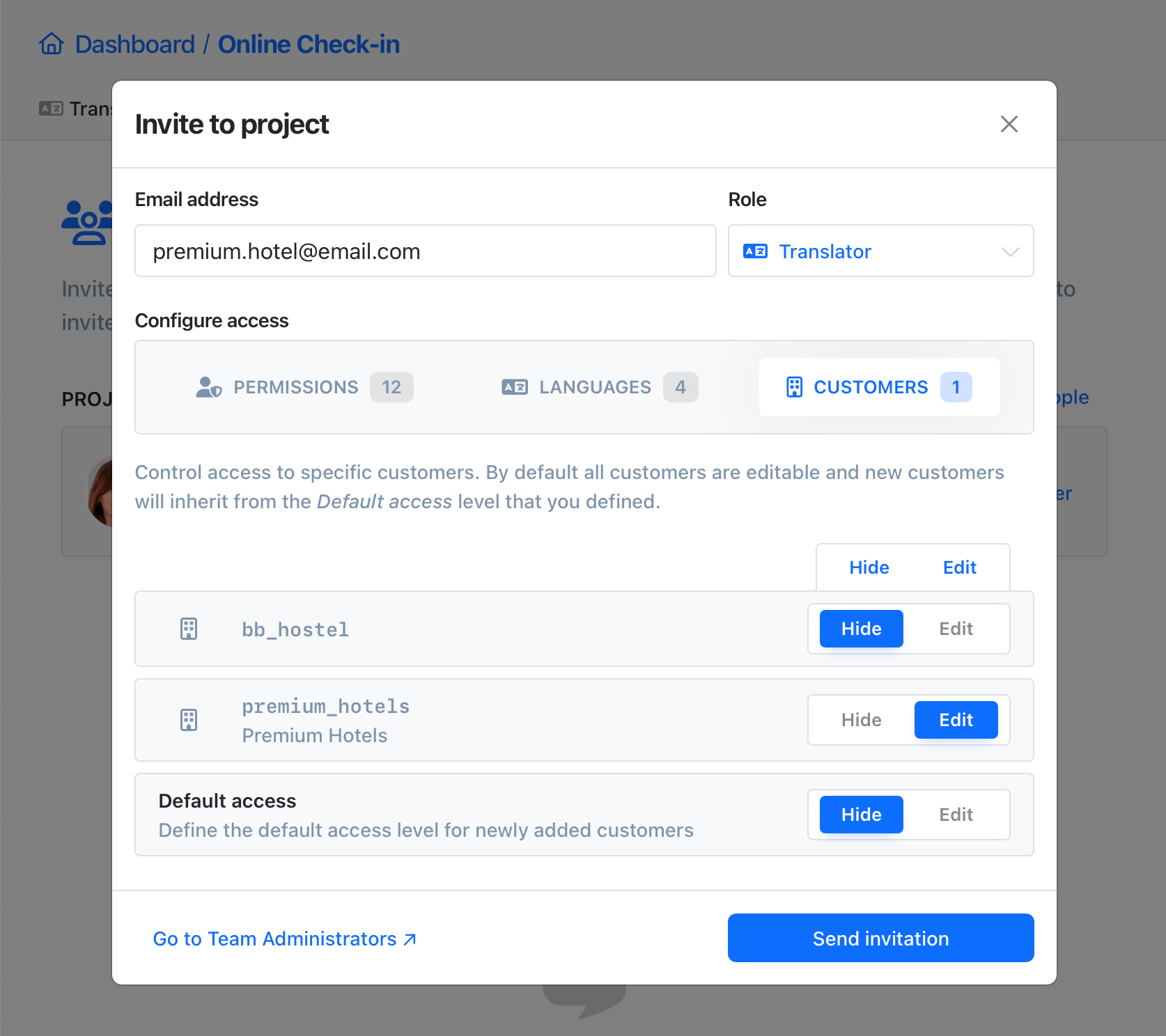
Public suggestions
Boost collaboration with public suggestions! Public translations offer an excellent opportunity to engage your community by allowing them to contribute to translations. Enable public suggestions, share your project link, and invite users to suggest translations or improvements.
Learn more about public suggestions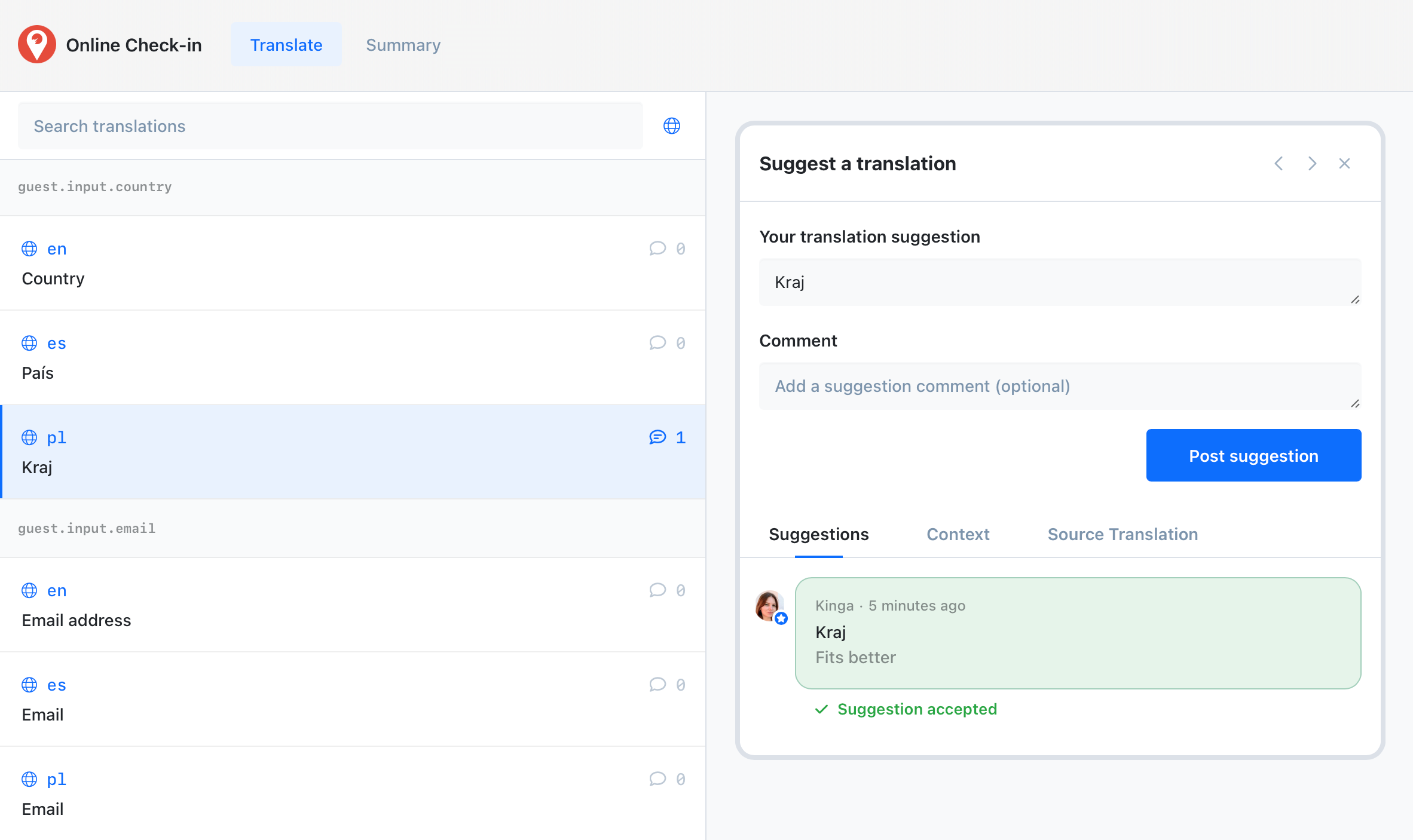
Translation Editor
Online translation editor that helps you to manage your translations in one place. With numerous features like auto-translation, comments, and notifications, you can easily collaborate with your team and keep your translations up to date.
See translation editor features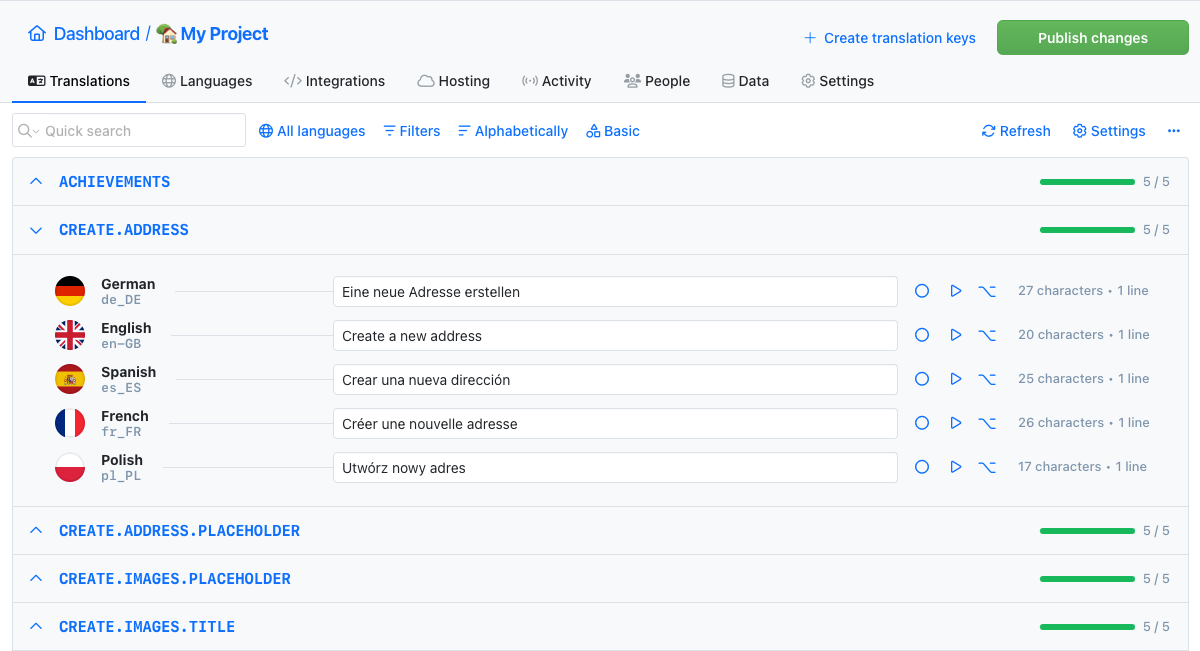
Automations
Automate your workflow with built-in automations. Execute predefined actions when a translations is changed to speed up your workflow and reduce manual work.
Learn more about automationsAuto-translation
Translate your application into multiple languages with just a few clicks. Choose from OpenAI ChatGPT, Google Translate or DeepL translation providers to translate your texts. Adding support for new languages has never been easier.
Learn more about auto-translation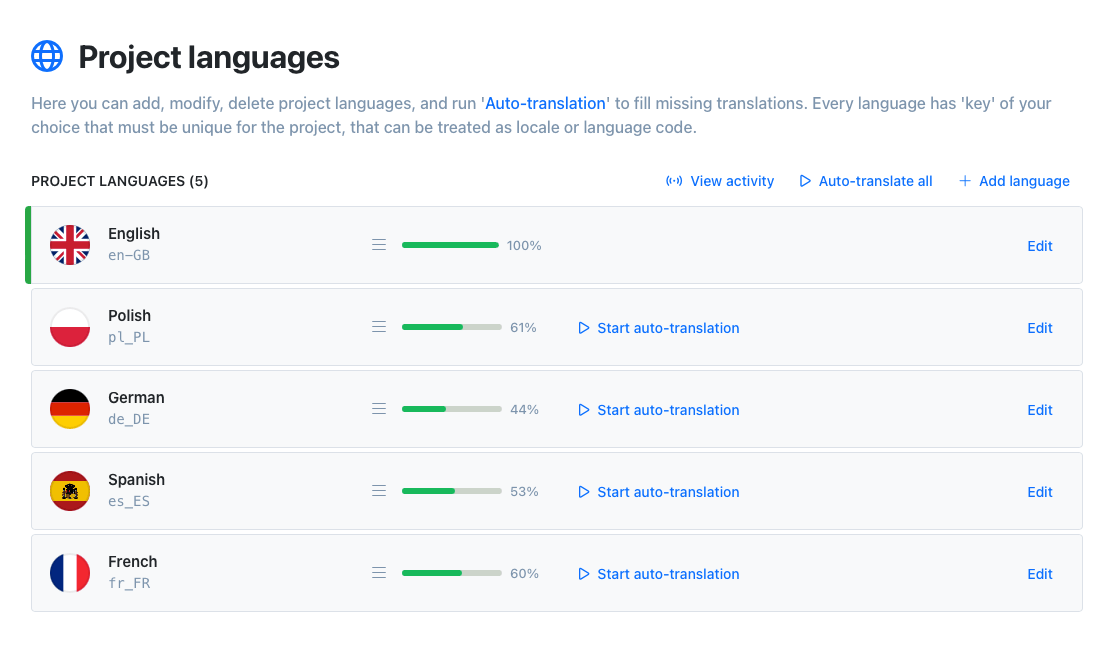
Project statistics
and activity tracking
Keep track of changes, monitor the activity of your team. Dive into detailed statistics about your translations. Monitor the number of changes and time spent on translations by your team.
Learn more about activity tracking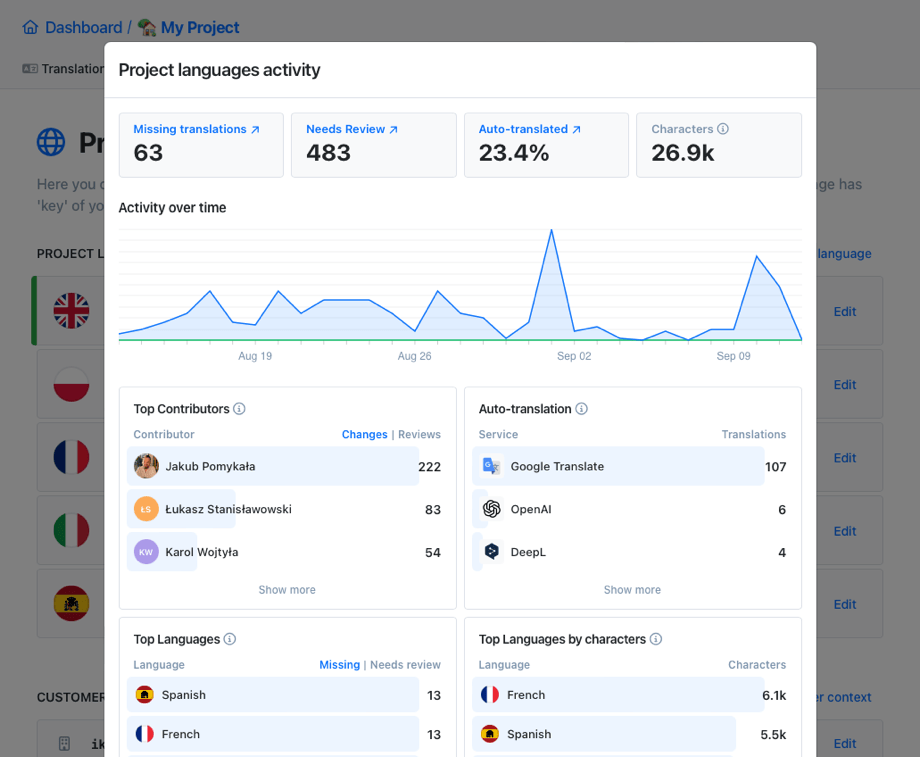
Translation Hosting
Get your translations lightning fast with our CDN. We provide a simple way to host your translations and serve them safely to your users.
Get started with translation hosting{
"en": {
"CREATE_ACCOUNT": "Create account",
"SIGN_IN": "Sign in",
"WELCOME_TO_THE_JUNGLE" : "Welcome to the jungle"
},
"es": {
"CREATE_ACCOUNT": "Crear cuenta",
"SIGN_IN": "Iniciar",
"WELCOME_TO_THE_JUNGLE": "Bienvenido a la jungla"
}
}
Webhooks
Get real-time updates on your translations with webhooks. Automatically trigger actions in your application when translations are updated, so you can keep your project up-to-date without manual intervention.
Learn more about webhooks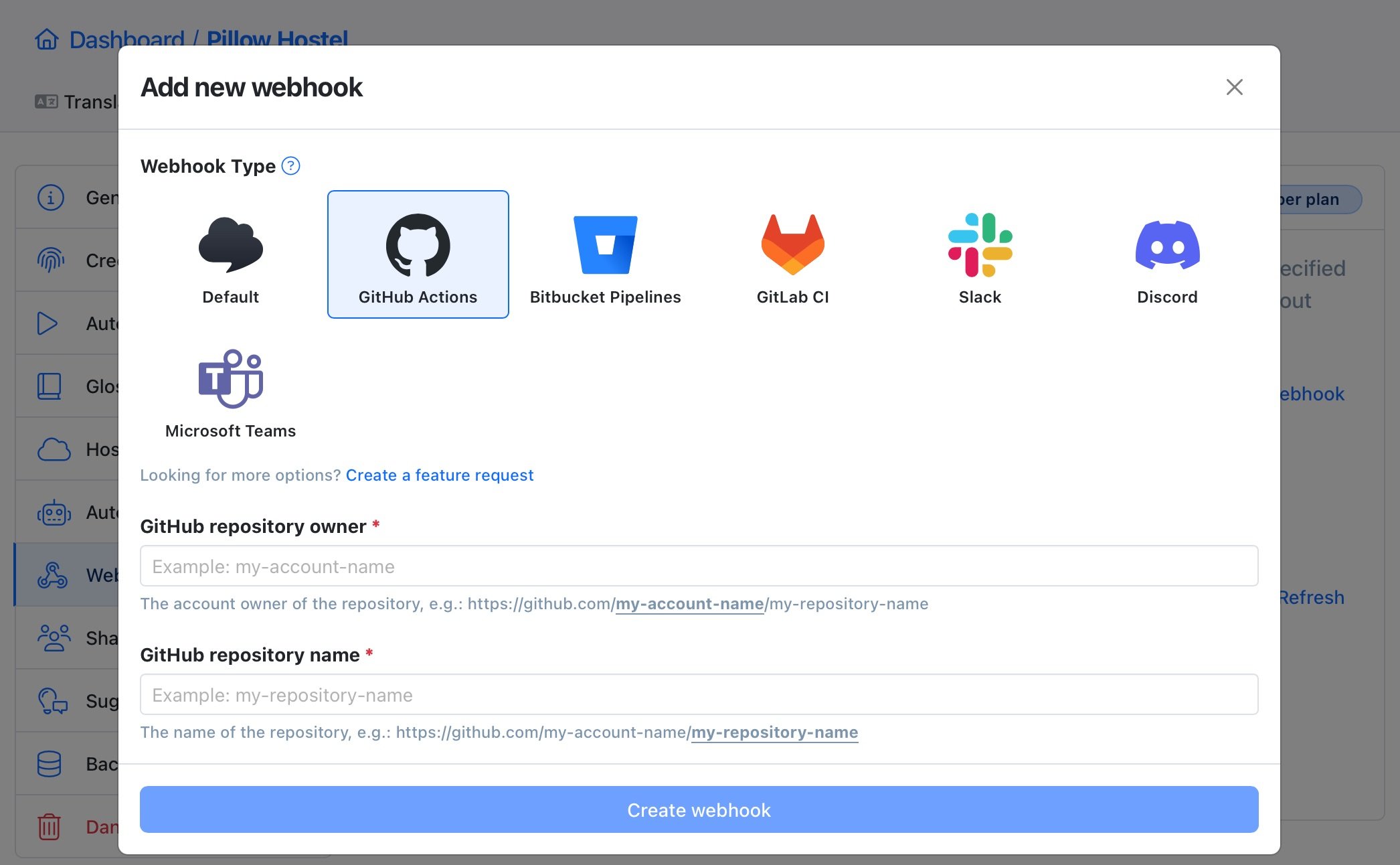
OpenAPI ready
Automatically generate API client for your favorite programming language with our Open API 3 specification file. You can use our API to manage your projects and translations, run auto-translations and more.
Read the API documentation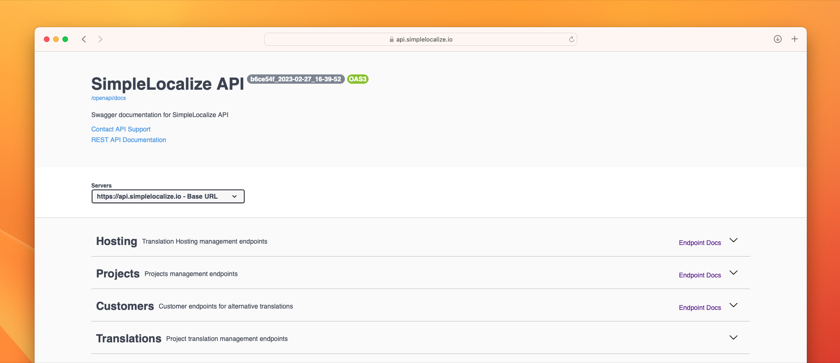
Greet your customers
in their native language
What is customer translation?
Customer translation is a feature that allows you to create alternative translations for your app users. You can create customer-specific translations to provide a better experience for users with different translation preferences. Customer translations can be used to adjust translations to suit your customers' needs and improve the quality of your content. Alternative translations can be used to provide translations tailored to specific customer groups or individual users. First, you create a customer context, then you can add translations that will be used for users in that context. This way, you can provide translations that are more relevant to your customers and improve the user experience.
Customer access to translations
Allow your clients to access your SimpleLocalize project and manage the translations of your product for their specific needs. Invite your customers to your project and let them adjust translations to suit their needs. When you invite a customer to your project, you can hide other customers' translations from them, so they can focus on their own translations and see only the base translations and translations created by other users in their context. Access permissions can be set for each customer, so you can control what they can do in your project. You can allow them to add translations, edit translations, or only view translations in specific languages and customer contexts. This way, you can give your customers the ability to manage translations for their specific needs while keeping control over the project.
How to access customer translations
To access customer translations, you need to create a customer context in your SimpleLocalize project. You can create a customer context for each customer group or individual user and add translations that will be used for users in that context. You can fetch translations for a specific customer context using Translation Hosting, or using SimpleLocalize CLI. You can also access customer translations using the SimpleLocalize API or simply export translations for a specific customer context from the SimpleLocalize app.
Customizing translations for customers
When you provide a software product to multiple customers, sometimes they have different translation needs. You can use customer translations to customize translations for each customer group or individual user. For example, if one of your customers prefers a specific term to be used in the translation, you can create a customer context for that customer and add translations that use the preferred term. This way, you can provide translations that are more relevant to your customers and improve the user experience.
Inviting customers to manage translations
You can invite your customers to manage translations for their specific needs. When you invite a customer to your project, you can set access permissions for them, so you can control what they can do in your project. This way, your customers act as translators and can adjust translations in selected languages and customer contexts. You can also hide other customers' translations from them, so they can focus on their own translations and see only the base translations. Another way to engage your customers in translation management is to allow them to suggest translations. You can enable Public Suggestions for your project and let your customers suggest translations for your product. You can review and approve the suggestions before they are added to your project.


